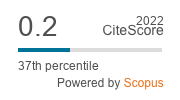The Temporal Structure of the Self
Keywords:
Consciousness, Mind-Brain relation, Neuroscience, Personal identity, Temporary structureAbstract
Recent research in neuroscience supports the hypothesis that, although consciousness is an emergent property of neuronal activity, is the subject, released from confinement in the present, who takes over the time code. It gives a sequential recruitment to different areas that process information according to the performance of different tasks or mental processes. The ability to change the temporal rhythm brings to the present the past, and simulates the future – time travelling – it has the necessary condition, regulatory efforts, braking of neuronal excitation, which can coordinate different rhythms in time units. Synchronization of oscillations in temporary unions of various brain structures provides self-consciousness, anchored in the body. Self-consciousness relates to the experiences of events and personal identity recognized by the succession of past experiences, present, and a harbinger of the future, indicating that the self has an embodied temporary structure. Synchronization of oscillations in temporary unions is perceived as “I’m sorry, I think, I remember, I decide. Knowledge of de-synchronization in the brain that occurs in phenomena, such as what happens in the experiences of meditation and ecstasy, without normal sensorial perception, should be incorporated into scientific and philosophical theories of mind-brain relation. Precisely, the self is manifested in the release of every human being from the automatism of the “here and now”, as an extracosmic dimension which makes him able to cover not only all space but all time.



